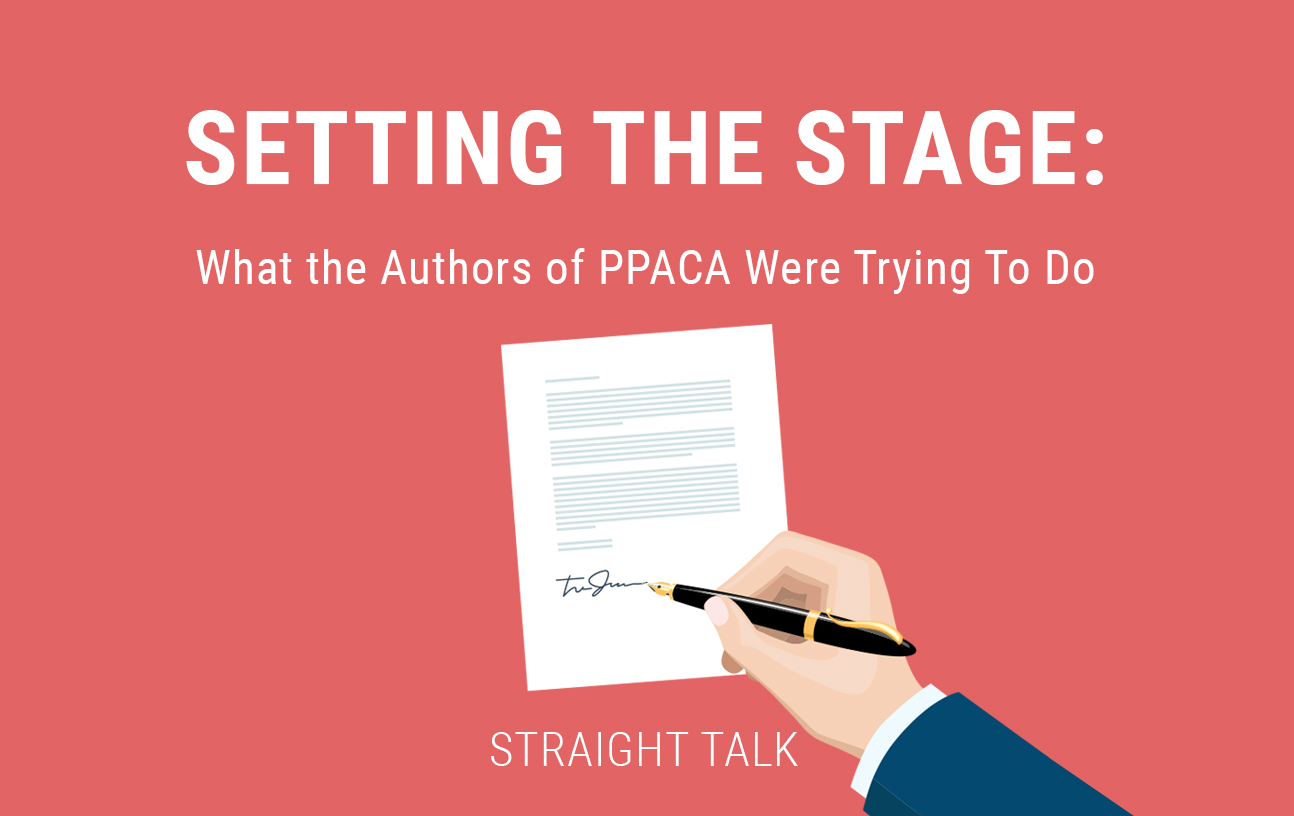I’m told that in the late 1800s, a very popular form of entertainment that regular folks would pay high admission prices to see was to watch two full-sized steam trains smash into each other at 40 miles an hour. I guess we are still the same basic humans 120 years later.
I spend a lot of time thinking about the process we are observing now, this move to “repeal Obamacare” or “replace Obamacare” or whatever you want to call it. Since I was there in 2009 when the Patient Protection and Affordable Care Act (PPACA, the healthcare reform law also referred to as the ACA) was originally negotiated and have been a constant observer of the process ever since, I’ve had tons of time to think about where we were, where we are going and why. It’s been a fascinating ride, unfortunately more like the fascination one gets by watching the above-mentioned head-on train collision rather than the fascination I might get from watching a really cool sunset.
“The original healthcare act, the ACA, had as much social re-engineering in it as it did healthcare. Based on a single-minded goal of trying to extend “coverage” to as many people as possible, the act sought to achieve this with two existing programs: Medicaid and the individual health insurance market.”
I’m going to set out over the next few Straight Talks a few observations, or “inflection points,” which the powers-that-be have made over the past 10 years in their quest to redefine the federal role in healthcare and health insurance. Let’s face it, whether a means to an end, or the end itself, that’s exactly what the ACA did, and exactly what the new proposals being considered in D.C. now (“Repeal,” “Replace” or something in between) actually seek to change.
I want to say up front that I believe both political parties have good intentions in their quest to remodel healthcare/health insurance. I believe they genuinely think they are each doing what’s best for America. Of course, as usual, they are not talking about the same “America” and don’t seem particularly interested in reconciling those definitions. Thus, the ACA, passed in 2010, swung a pendulum in healthcare drastically in one direction that created winners and losers. This has led to a political movement, spawned by those disadvantaged under the ACA, to create the current Congressional legislation and trying to swing the healthcare pendulum back the other way. As we move forward through this series, I’ll put some context around that.
Where It All Began
The original healthcare act, the ACA, had as much social re-engineering in it as it did healthcare. Based on a single-minded goal of trying to extend “coverage” to as many people as possible, the act sought to achieve this with two existing programs: Medicaid and the individual health insurance market.
Getting more people covered under Medicaid is a straightforward exercise. You simply create a new, wide-open category of eligibility (all humans living in households with incomes under 138% of the Federal Poverty Line), and then create a new string of funding, tens of billions a year, to pay for it all. Seems pretty easy, right? I make a new eligibility class of folks, give them lots of money, and BAM! They have coverage. This process has run into staunch opposition under the current Congress, but the reasons for that are actually pretty straightforward, and we’ll cover them in a later post.
“By accumulating these powers centrally, the authors hoped to standardize the individual health insurance market and turn it into something they were willing to subsidize that also fit their collective definition of quality and fairness.”
The second part of that process was where all the problems really began. The ACA’s authors wanted to use the existing individual insurance marketplace to extend coverage to millions more people. But they really, really didn’t like the market as it was and decided to federalize the whole thing so they could easily make changes to it.
That’s where the problems really started. The existing individual market was entirely unsuited for that purpose for a variety of reasons:
- The individual market used to be regulated at the state level, meaning every state had a slightly different definition of what constituted an individual insurance policy. Dems were unwilling to subsidize coverage unless it fit their own definition of “quality coverage.”
- Each state had slightly different admission and underwriting policies. This meant that unlike the employer insurance market, in the individual market, sometimes a very sick person could be denied coverage or charged a lot more than a healthy person for the same plan.
- There was no national clearinghouse or single Amazon-type market to sell or regulate coverage coast to coast.
- Many of the people the ACA’s authors wanted to cover could not afford the premiums or cost sharing.
How the ACA Changed Healthcare Coverage Rules
To rectify these barriers, the authors embarked on a strong exercise of the 10th Amendment (when federal rights trump states’ rights) and stated more than 100 times within the Act’s text which types of power and authority were to be drawn back to Washington, D.C.
“If we are going to fully understand the impact of the new healthcare reform laws being proposed, we must understand the opposition to the ACA and where things went off the rails. “
By accumulating these powers centrally, the authors hoped to standardize the individual health insurance market and turn it into something they were willing to subsidize that also fit their collective definition of quality and fairness. They corrected each of the three issues listed above this way:
- They used the ACA to create a federal structure to regulate the individual market in all 50 states, overriding state insurance commissioners’ authority. With this power, they could continue to tweak and change this new market through the regulatory process, based on their version of fairness and quality.
- They set a hard-and-fast “No exclusions” rule that required any participating insurance company to accept everyone who showed up for coverage without regard to their health conditions. Then, they created a federal definition of health insurance, called the “Qualified Health Plan,” which would be sold with the same benefit coverage categories from coast to coast.
- They created a federal clearinghouse, the Marketplace/healthcare.gov, where insurance could be listed and sold. Within it, they established two new layers of income-based federal financial assistance (Advanced Tax Credits and Cost-Sharing Reductions), and they created a new federal agency (Center for Consumer Information and Insurance Oversight, CCIIO) to run it all.
Collision Rather Than Collaboration
This act took more than a year to write and pass through a strongly Democratic-controlled Congress and the White House. Not a single Republican voted for the plan in either the House or Senate. It started out as a 2,800-page instruction to the administrative side of the federal government and spawned around 90,000 pages of new federal rules between 2010 and 2015. And despite all of this hard work, hard planning and deep thinking, even with the full power of the federal government and total control by the authors for two years, many people seem very unhappy with the results.
How on earth did we get here? If we are going to fully understand the impact of the new healthcare reform laws being proposed, we must understand the opposition to the ACA and where things went off the rails. Like all large federal utterances, the ACA created clear winners and losers.
Y’all up for a series? Straight Talk on this will continue next week.





Leave a Reply